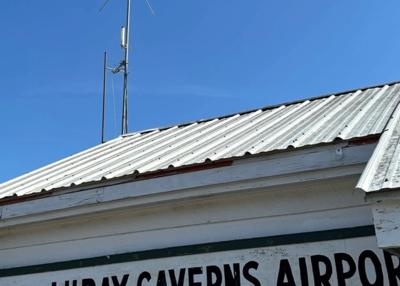Sun, Sep 03, 2023
Receiver Network Enables Higher Resolution for ADS-B Tracking
The Civil Air Patrol’s Virginia Wing has helped uAvionix test out a DO-260B compliant dual band ADS-B receiver network to supplement FAA sensor data, bearing out the new systems’ benefits under the National Radar Analysis Team mission to shorten rescue times.

Volunteers all over Virginia state have helped to find and assess receiver sites to install small, lightweight “Flightstation” ADS-B receivers designed to pick up and relay transponder data from nearby aircraft. The network helps increase resolution at lower altitudes, greatly enhancing the quality of positional data for low-flying general aviation aircraft. Should the worst come to pass, that data becomes vital as the last known position for an aircraft - the more accurate the information, the smaller the search area, therefore the better the health outcomes for those injured in an off-airport landing.
The system, apparently operating as “FlightLine”, consists of “several ATC grade ADS-B receivers with overlapping coverage, allowing for validation of transmitted ADS-B data and pinpoint multilaterated positions.” That helps cover the gaps in traditional ADS-B and radar coverage, partly caused by the dearth of the 978 Mhz monitoring throughout the USA. The newly deployed network means that Virginia is the “first State in the US to have 100% coverage down to 500 ft of altitude”, with more to come.
“NRAT has been working several years to test small ADSB receivers to place at locations with limited FAA coverage”, said Lt Col Mark Young, Commander of NRAT. “The availability of these new receivers, built to RTCA aviation certification standards, and it’s subsequent real time data from FlightLine data available to CAP is a significant advancement for NRAT. Real time data at lower altitudes significantly improves NRAT’s ability to provide a fast and accurate location of missing aircraft that can be used to support the Emergency Services Search & Rescue mission and will result in lives saved.”
“uAvionix is proud to work together with CAP to improve low altitude data availability for this important public service”, said Christian Ramsey, Managing Director of uAvionix. “The introduction of ADS-B has resulted in a significant improvement of General Aviation safety, expanding on the FAA coverage at lower altitude and for UAT transponders typically carried by General Aviation will further enhance the tools used in safety of life activities such as CAP‘s Emergency Services mission.”
More News
A Puff Of Smoke Came Out From The Top Of The Engine Cowling Followed By A Total Loss Of Engine Power On May 9, 2025, about 1020 mountain daylight time, an experimental amateur-buil>[...]
From 2022 (YouTube Edition): Jenny, I’ve Got Your Number... Among the magnificent antique aircraft on display at EAA’s AirVenture 2022 was a 1918 Curtiss Jenny painstak>[...]
Very High Frequency (VHF) The frequency band between 30 and 300 MHz. Portions of this band, 108 to 118 MHz, are used for certain NAVAIDs; 118 to 136 MHz are used for civil air/grou>[...]
“From approximately November 2021 through January 2022, Britton-Harr, acting on behalf of AeroVanti, entered into lease-purchase agreements for five Piaggio-manufactured airc>[...]
From 2008 (YouTube Edition): US Fish and Wildlife Service Chooses The Kodiak To Monitor Waterfowl Populations Waterfowl all over North America may soon have to get used to a new ab>[...]
 NTSB Prelim: Lee Aviation LLC JA30 SuperStol
NTSB Prelim: Lee Aviation LLC JA30 SuperStol Classic Aero-TV: Curtiss Jenny Build Wows AirVenture Crowds
Classic Aero-TV: Curtiss Jenny Build Wows AirVenture Crowds ANN's Daily Aero-Term (05.30.25): Very High Frequency (VHF)
ANN's Daily Aero-Term (05.30.25): Very High Frequency (VHF) Aero-News: Quote of the Day (05.30.25)
Aero-News: Quote of the Day (05.30.25) Classic Aero-TV: Quest Kodiak Enhances Migration Monitoring Programs
Classic Aero-TV: Quest Kodiak Enhances Migration Monitoring Programs



